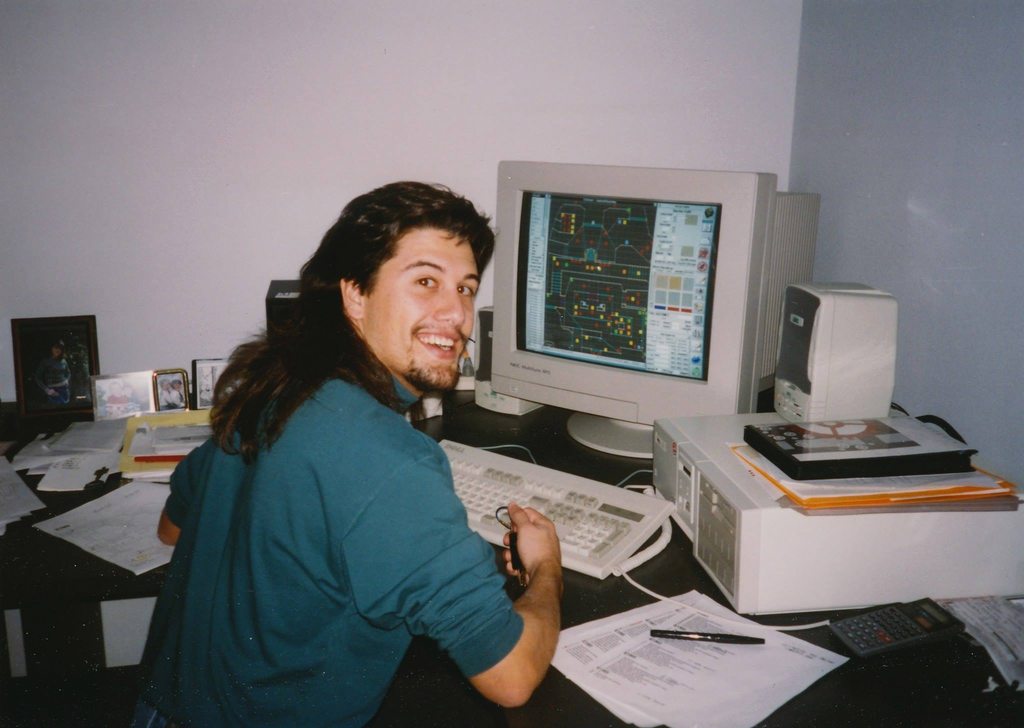
Monster Mania: Wolfenstein’s Man Made Monsters
Monster Mania is a weekly column celebrating the unique and varied monster designs in horror gaming.
The Wolfenstein franchise has always been rooted in the horrors of war. The series has served mainly as a pulpy extrapolation of the Nazi’s sadistic obsession with genetic experimentation, continually throwing increasingly demented abominations at ol’ Terror-Billy.
In Wolfenstein 3D it was mutants. In Return to Castle Wolfenstein, it was Über-Soldats and the horrors of the X-Labs. In 2009’s Wolfenstein, it was the occult. And in Wolfenstein: The New Order, it was the Supersoldaten. While The New Order was not the first entry in the series to introduce these steel behemoths, it was the entry that further pulled back the curtain on their despicable origins and more deeply examined the Nazi’s atrocities of war.
Series protagonist and Jewish superhero B.J. Blazkowicz encounter several iterations of Supersoldaten throughout his decades of slaughtering Nazi scum. And while the design iterations and armaments might change, this man-made biomechanical nightmares origin remains its most chilling attribute. Wolfenstein has remained a shining example of alternative history over the last 40-plus years because its fictional horrors have some basis in reality.

The Supersoldaten is an extension of series antagonist General Deathshead’s obsession with melding flesh and metal to create the next “great” age of soldiers. A masturbatory endeavor that more or less tells you all you need to know about the “master race.” Before focusing on the exterior steel chassis of this hulking horror, we must look inward to the atrocities within. Human test subjects are pumped full of experimental chemicals, implanted with cybernetics, and have their brains de-aged to a primitive state concerned only with violence.
In this chemically induced state, Supersoldaten can no longer speak or be reasoned with, yet follow orders from Deathshead or other high-ranking Nazi officers. This insidious mind and body altering is a staple of the regiment of governance with a real-world basis in Nazism. The idea is that those below you are an inferior people ripe for enslavement, bending their will and following every beck and call to those above them. If this were simply a robot following programming, it would be less notable, but the nefarious nature of the monster being a man makes it a much darker foe.
Due to their lack of willpower and communication skills, Supersoldaten relies on grunts and brutish roars, indicating it is, in fact, cloberin’ time. They enter a berserker-like state upon seeing B.J. Blazkowicz charging at him, knocking him backward before further engaging in melee or utilizing a variety of heavy weaponry. As for their exterior form, Supersoldaten are hulking blocks of steel that are as intimidating as they are deadly. Their chassis provides them unparalleled protection from gunfire and, being afforded the aforementioned Hulk hands, used to bash, smash, and yeet anything standing in their way.

Essentially a tank-style enemy, the Supersoldaten’s inherent protection from gunfire makes it formidable on its own but a downright problem when mixed in with other general infantry. Through Machine Games’ tenure with the series, and their approach to telling B.J.’s plight throughout several decades of alternate history, we see several iterations of Supersoldaten.
In, The Old Blood, players are given a look at the earliest prototype, which lacked the technology to operate independently of a power supply that they were tethered to, restricting their movement. In The New Order, B.J. encounters the Supersoldaten 46 prototype that aesthetically is cobbled together with steel. Still, Deathshead’s technological prowess has allowed it to move and operate with a self-contained power source. Later, B.J. would encounter a 1960s iteration that, while functionally not all that different from the 1940s model, had an aesthetically sleeker design. Wolfenstein II: The New Colossus is where we see the most drastic rearmament.
Supersoldaten 61 have wholly ditched the human component and are fully cybernetic, equipped with jump packs making them more agile, and improved heavy weaponry, making them a certified threat. An intelligent approach to the versatility of an enemy type that isn’t drastically altered, but minor changes to each iteration proves just how strong that initial foundation was.
Periodically, B.J. will glimpse the man underneath their metal mask resembling a Greek god. When their face mask falls off, it reveals a face only a mad Nazi scientist could love, given the extent of the facial mutilation the test subject has endured. A fleeting moment, but a design detail that makes these fantastical foes feel somewhat (however loosely) rooted in real-world atrocities of war. This isn’t just a robot, but a man. A manufactured monster stripped of its will and identity in service of blindly following the orders of a fascist lunatic, which is at the core of the era of fascism that the Wolfenstein franchise has always been firmly rooted in.
For more horror game reviews, opinions, and features, check out DreadXP.




